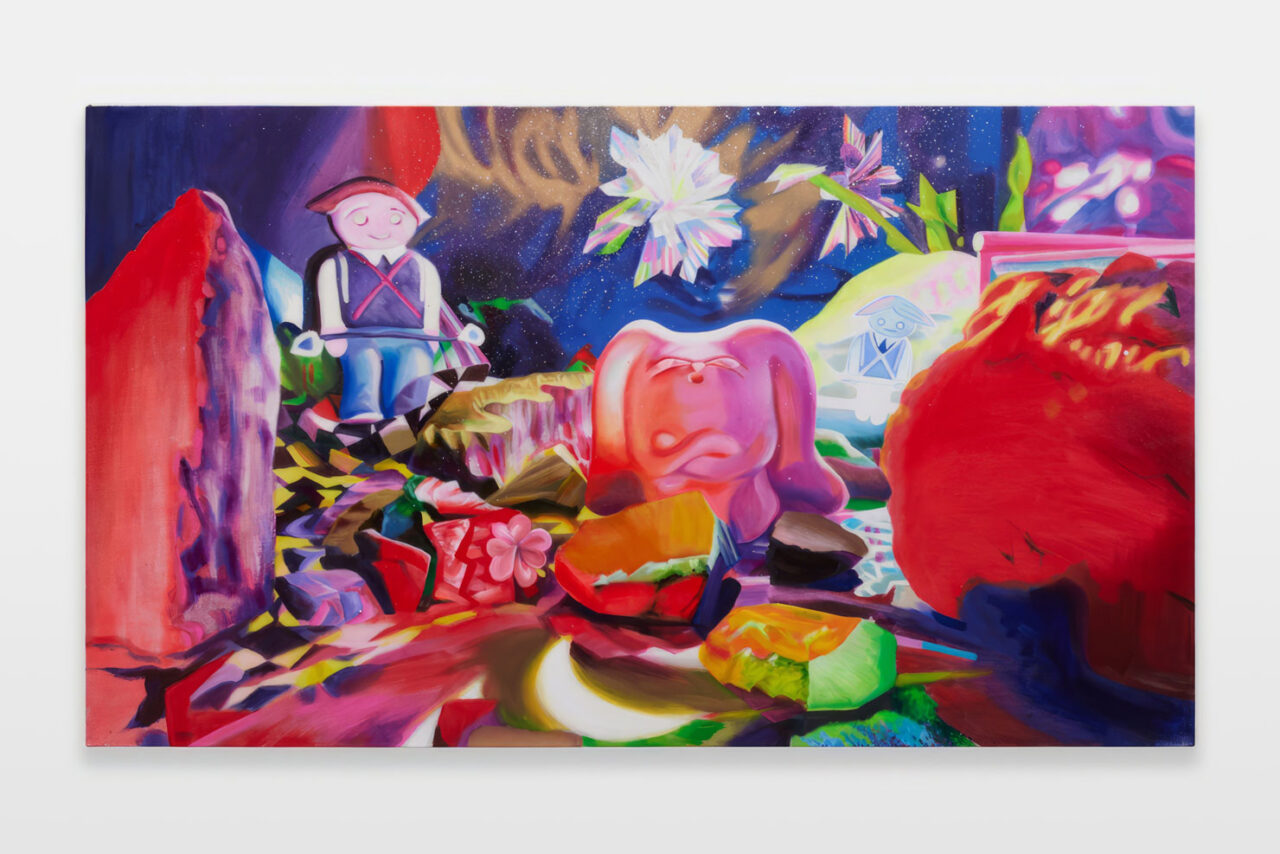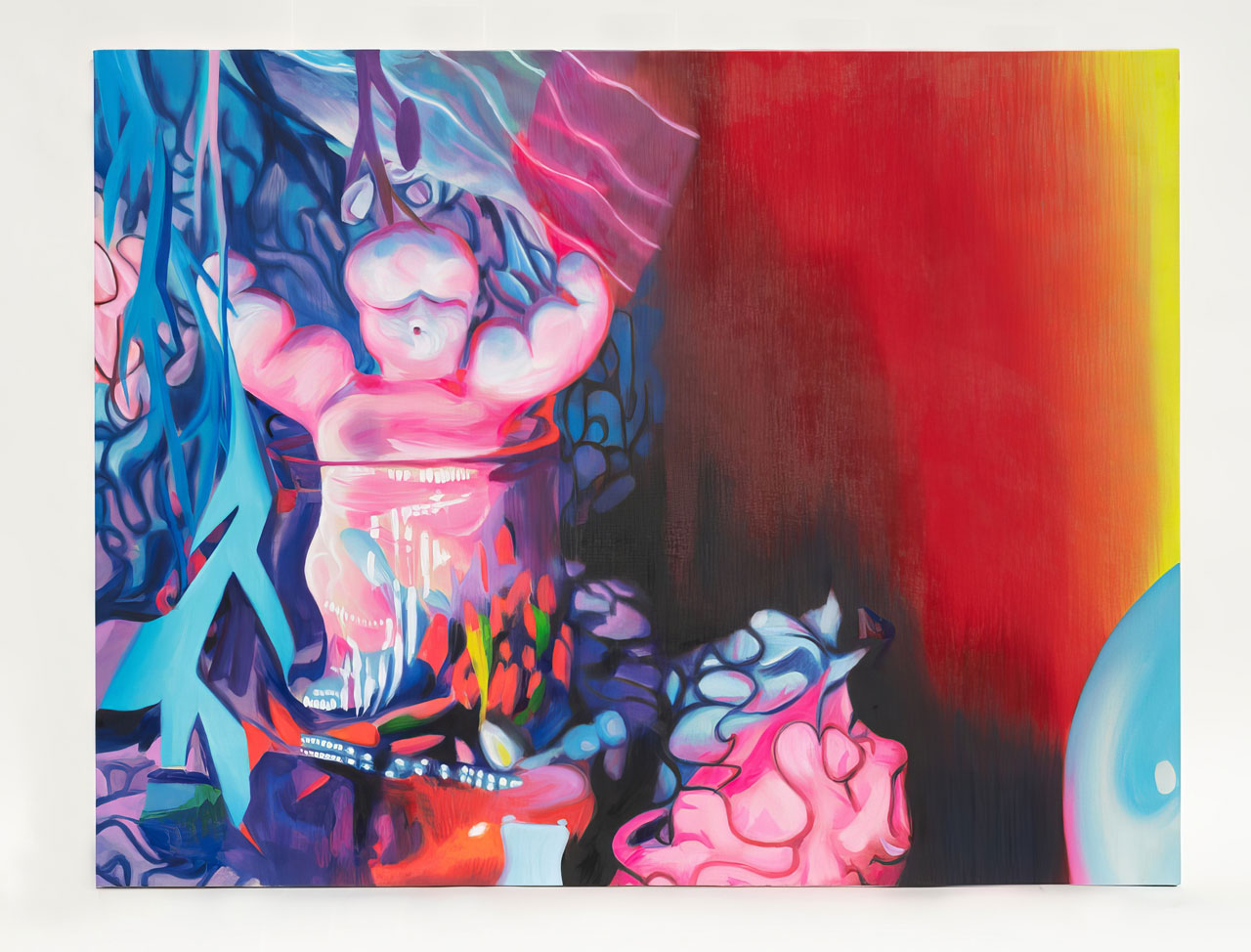ART CITIES: Tokyo-Aya Ito
Aya Ito creates paintings with her highly original motifs and process. The work expresses a dangerous humor that addictively attracts the viewer with its vivid sea of color. Ito’s paintings have gone through changes: in addition to a new approach of arranging various motifs in the diorama and painting all images as they are in her mind, Ito has begun using various new motifs. She became fascinated with vegetables while living with and helping a Farmer’s family in Ireland.
By Efi Michalarou
Photo: Tomio Koyama Gallery Archive
Aya Ito’s daily life and artistic practice became closely related naturally, perhaps, in part due to the fact that her family works with mandarin oranges. Ito started putting more emphasis on “how to deal with work” rather than which themes to use to create work, and began taking time to lie down and “talk” with each motif and drawing. Aya Ito’s solo exhibition, “PASSING WIND”, features a selection of new paintings and three-dimensional works. With their maelstrom of dark vibrant colors such as orange, red, green, purple, and yellow reminiscent of artificial neon, remarkably composed backdrops where time and space appear distorted, and aloof figures or objects that are enlarged, minimized, or seem suspended in mid-air—Ito’s works instill viewers with a peculiar sensation, as if peering into a languid and weightless space. Ito describes her work as presenting “meaningless connections,” akin to “the way people’s lives briefly intersect with one another as they come and go across the scramble crossing in Shibuya.” There protagonists and the scenery are devoid of any coherent context; rather, they are conceived through a series of chance encounters, where the artist’s reveries lead to further fantasy. The halation of these foreign entities is evocative of an absurd nighttime dream, implying a sense of connection between Ito’s works and surrealism. Another notable feature of Ito’s work is her production process. Ito physically constructs worlds of chaos, which she then photographs—her finished paintings in essence being realistic depictions of these compositions. She creates character-like entities, and combines them with miscellaneous items such as fabric, plants, toys, and cellophane to create a diorama, then takes numerous photographs and selects a specific image from which to produce a faithful rendition on canvas. The way she enhances the precision of her work through this painstaking process could be perceived as an experiment that aims to discover surprise and joy beyond imagination. Recent collaborations including her two-person show with Richard Gorman, as well as projects with The Essential Store and the Fujimura Family have also enabled her to generate a sense of exuberance through encounters with other talents. The title of this exhibition, “PASSING WIND,” reflects the theme of the exhibition and incorporates Ito’s unique sense of wordplay. In the new work “I AM DONE,” a character made of ceramic under the pretext of “someone who has done it all,” is seen lying down with tears in their eyes. DONE is taking a mental vacation in preparation for its future endeavors. Contrary to this figure in its seeming state of emptiness, fabric, flowers, and pine leaves are arranged around them in lively and vibrant colors, creating a mysterious world that expands and unfolds upon the large 227cm-square canvas. “LUCY” is a clay character with woolen hair, who gently asks DONE, “Are you ok?” While Ito initially anticipated her woolen hair to flutter in the wind, the expression changed as wetting it with water had also given it an interesting look. The bright colors contrast with those in “I AM DONE,” and the background, unusually for Ito’s work, is made of aluminum cloth reflecting light, giving a dazzling radiance to the background, while the spraypainted lines and the vitality of the flowers instill the painting with an air of dynamism. Flowers have a large presence in these new works, but rather than focusing on names or varieties, the artist selected those she wished to include in the painting based on their shape and atmosphere, and their energy as living beings also contrasts with the manmade objects, creating a powerful impression. A giant sleeping stone will also be created and installed in the gallery. While visitors will be able to view the work lying down as they please, from a bird’s eye perspective, they may feel as if they are participating as part of Ito’s work.
Photo: Aya Ito, BUFF ASSHEAD, 2022, oil on canvas, 112.0 x 145.5 cm, © Aya Ito, Courtesy the artist and Tomio Koyama Gallery
Info: Tomio Koyama Gallery Roppongi, complex665 2F, 6-5-24, Roppongi, Minato-ku, Tokyo, 106-0032 Japan, Duration: 3/8-7/9/2024, Days & Hours: Tue-Sat 11:00-19:00, http://tomiokoyamagallery.com/
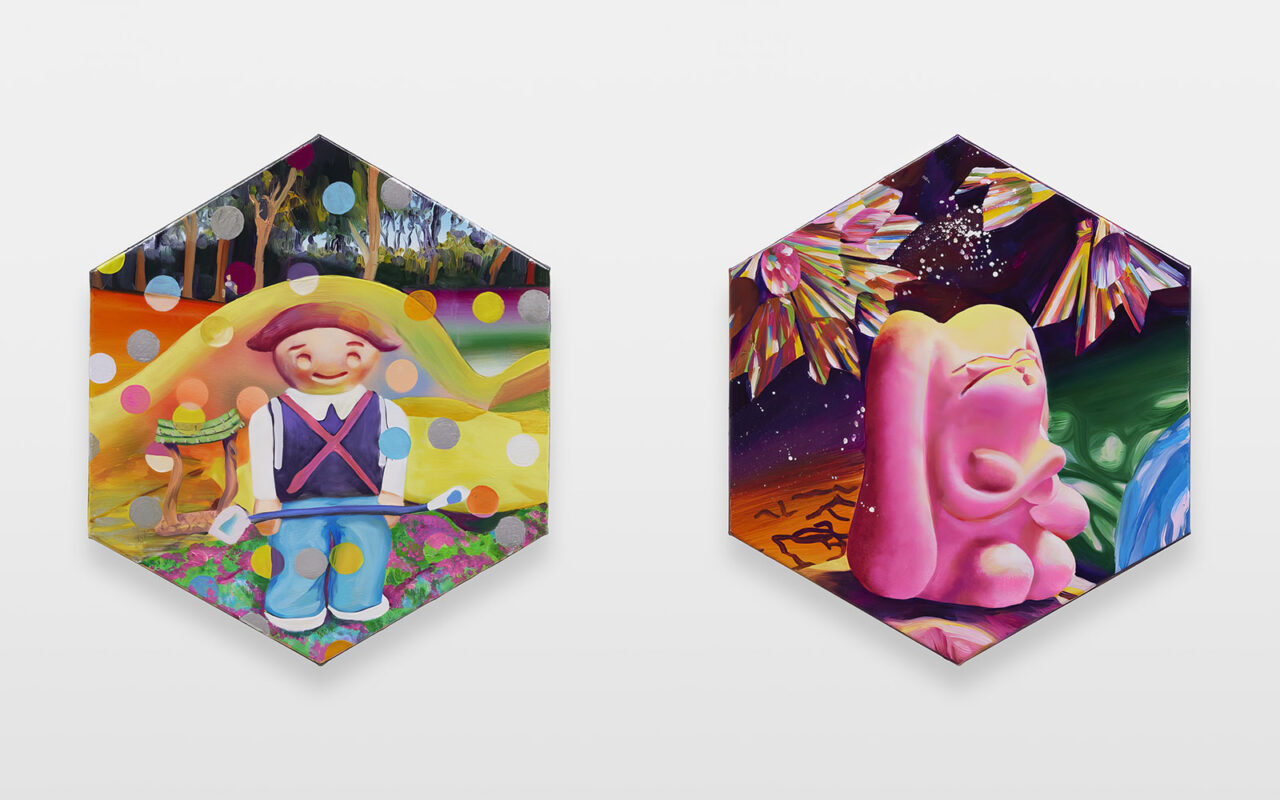
Right: Aya Ito, UNIVERSE CROSSING, 2022, oil and spray on canvas, 49.8 x 43.5 cm, © Aya Ito, Courtesy the artist and Tomio Koyama Gallery
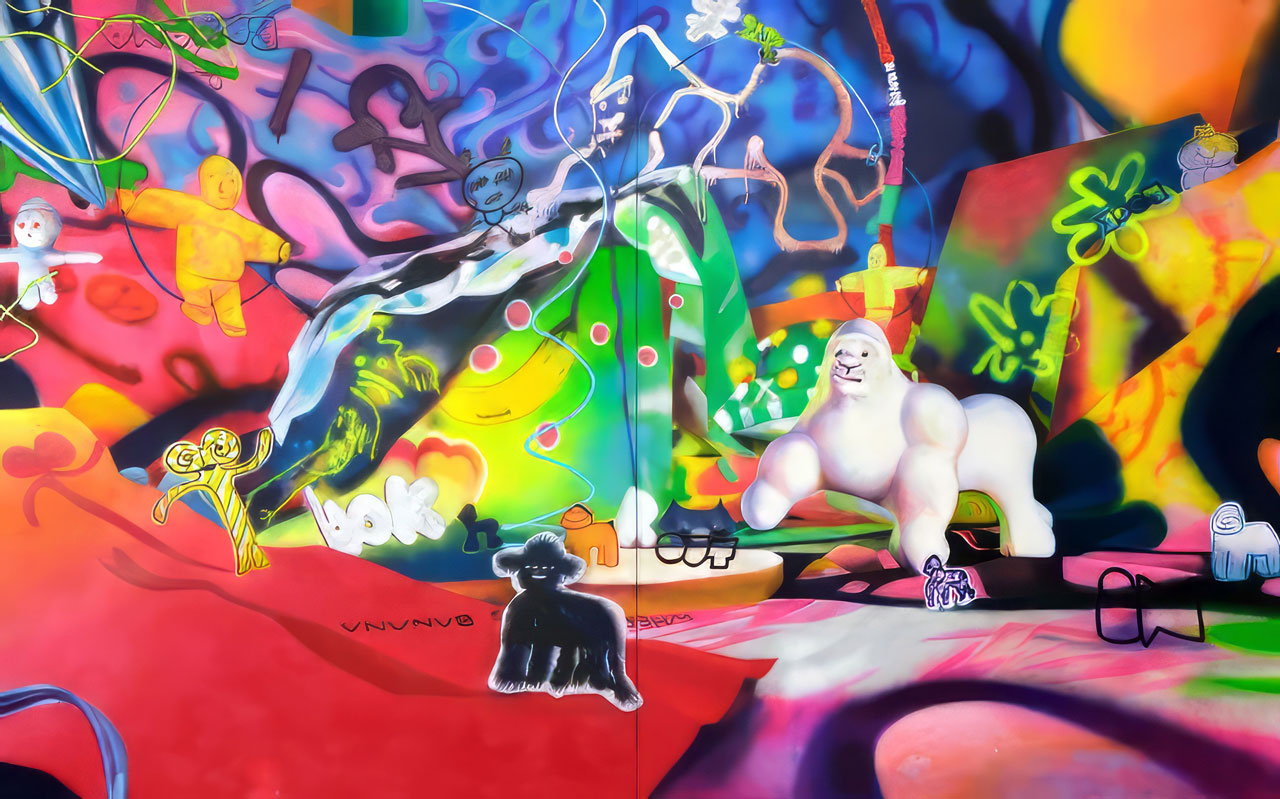
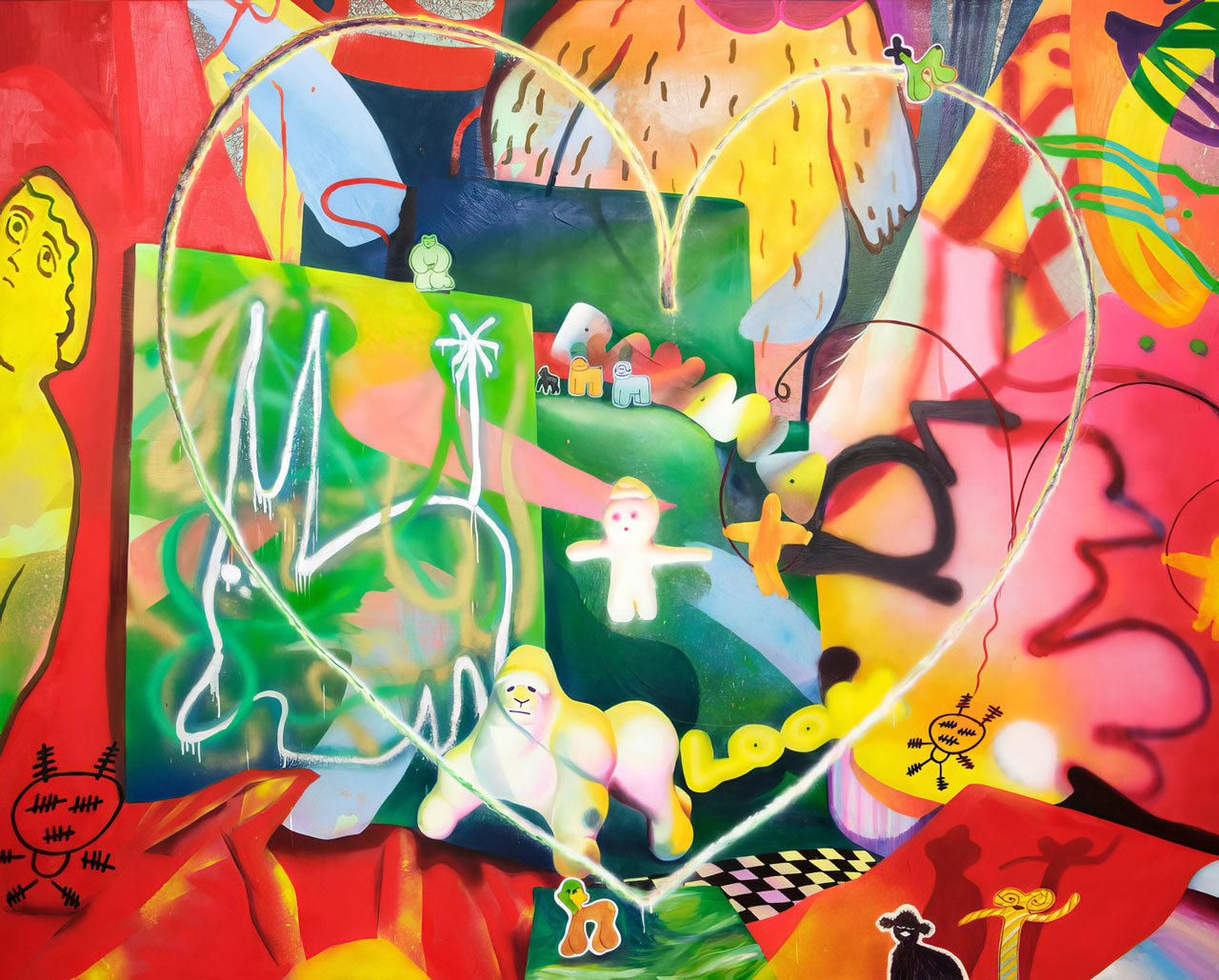
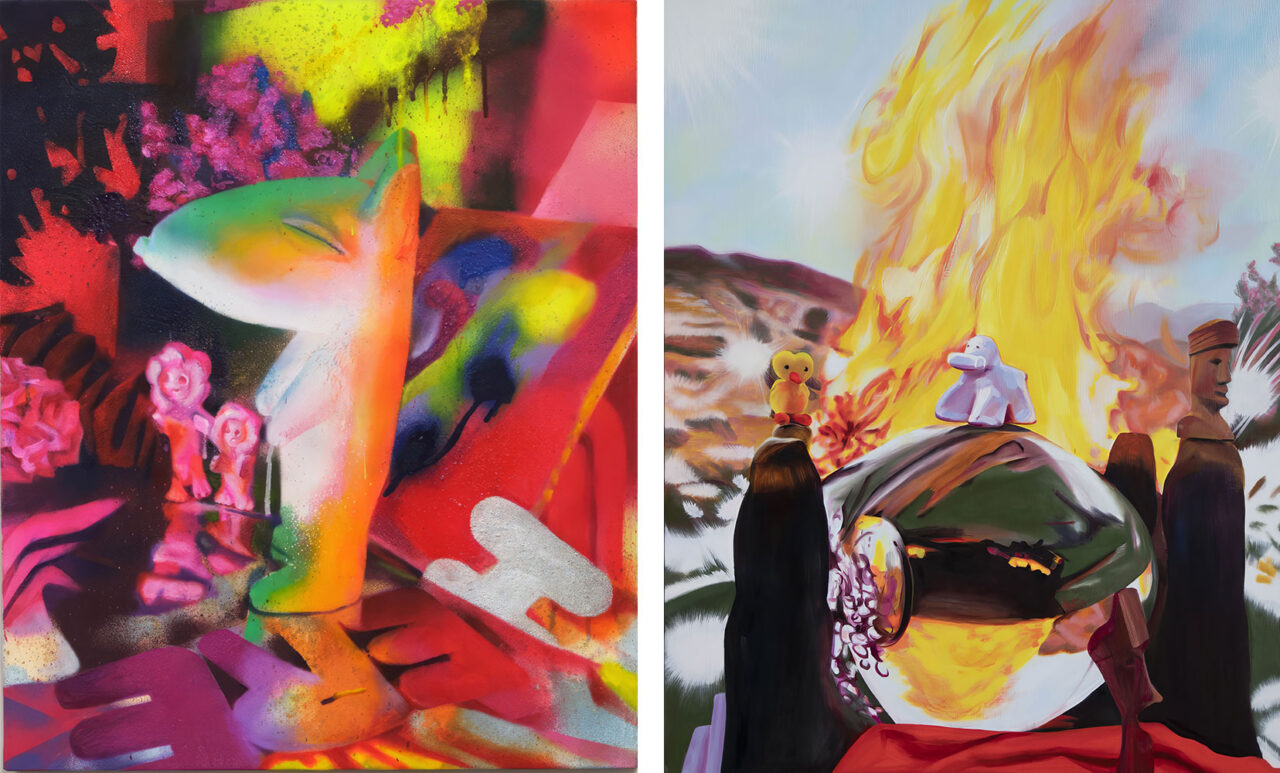
Right: Aya Ito, SCENERY IN FLAMES, 2020, oil on canvas, 162.0 x 130.3 cm, © Aya Ito, Courtesy the artist and Tomio Koyama Gallery
